


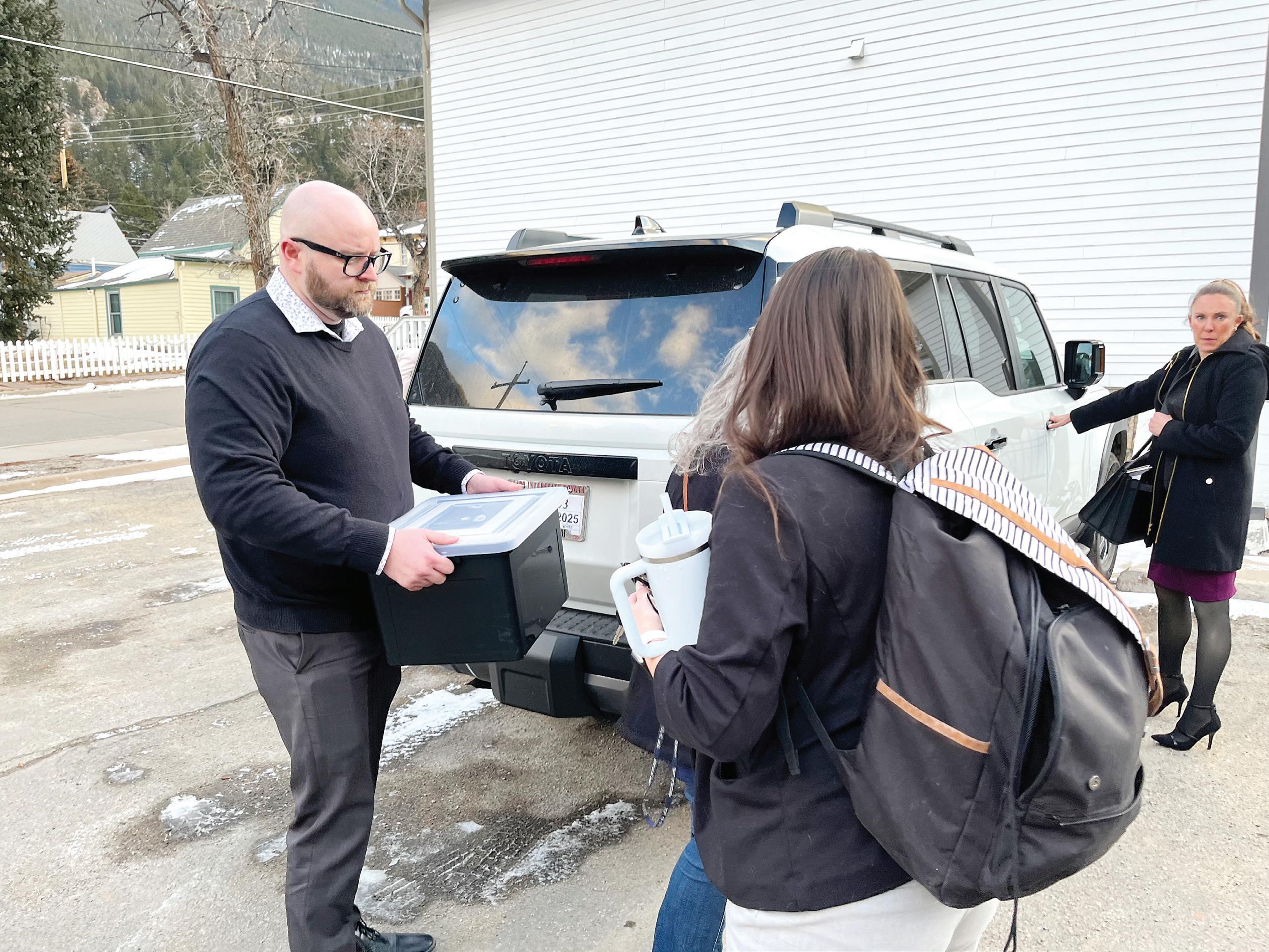







BY CHRIS KOEBERL
A Clear Creek County jury made up of six women and nine men witnessed what former deputy Andrew Buen saw, said and did in events leading up to him ring ve shots through the windshield of Christian Glass’s vehicle, killing him.
e jury watched Buen’s own body-worn camera from the time he turned it on, arriving on-scene, to when he stopped




recording as he was taken to the Clear Creek Sheri ’s o ce for an “after action” interview with the Colorado Bureau of Investigation (CBI).
Buen’s body cam recording includes a “timecode” displaying the exact time of every interaction between the six other law enforcement o cers onscene, from Buen’s point-of-view, leading up to him ring the fatal shots that killed Glass.
e incident started on the night of June 10, 2022 when
Buen and his on-duty partner, deputy Tim Collins in a separate vehicle, received a call for a service at 11:23 p.m. for a stranded motorist.
Clear Creek dispatcher Paige Kincaid informed the deputies that the caller, Glass, reported being stuck on a rock that he’d inadvertently crashed into in Silver Plume and needed assistance, according to testimony.
En route to the call Kincaid relayed information to Buen and Collins that Glass was describing a “a spiritual awakening” he just experienced after returning from Moab, Utah where he was collecting rocks.
Kincaid also transmitted that
Glass seemed “paranoid” and that he “wasn’t making much sense,” according to testimony.
Glass told Kincaid he had two knives in the vehicle in addition to a hammer and rubber mallet, which he indicated he would throw out of the vehicle when o cers arrived.
Evidence showed the Glass did not throw the items out of the vehicle.
Shortly after Buen and Collins made initial contact with Glass, ve additional o cers arrived on-scene including: Colorado Division of Gaming Enforcement Investigators Mary







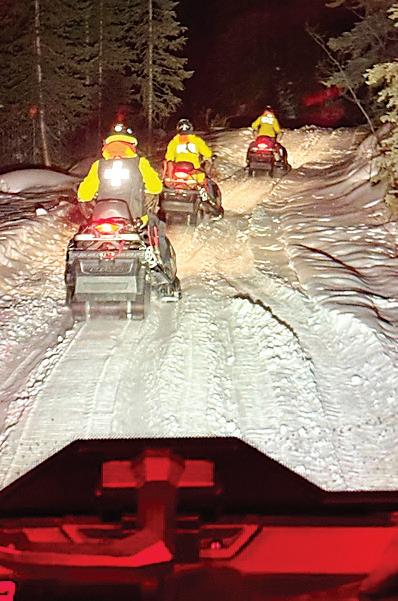





BY JOHN INGOLD THE COLORADO SUN
Dr. Daniel Kortsch is a pretty popular guy these days in the hallways of Denver Health, the hospital where he works in primary care.
Colleagues come up to him for spontaneous hugs. He’s received at least one box of chocolates.
The reason for this affection has to do with Kortsch’s other job at the hospital — as chief medical information officer, sort of a guru at the intersection of technology and patient care. After months of testing, Denver Health is now widely rolling out an artificial intelligence program that helps doctors transcribe conversations with patients and then convert them into notes that can be entered into the hospital’s electronic medical records system.
Sound simple enough? Well, for doctors overburdened with tedious documentation work long after their day at the clinic is over, it is life-changing.
“It’s transformational,” Kortsch said. “I think it is the most transformational technology I have seen in my medical practice, ever.”
Artificial intelligence has for years now been making its way into patient rooms and medical records in Colorado, whether that is to diagnose tricky conditions or to spot health risks before they emerge. But Denver Health’s use of AI highlights
another front: The potential for AI programs to make doctors’ workflow a little less clunky and burdensome.
The program Denver Health uses comes from a company called Nabla, which now counts 50,000 doctors and other medical practitioners across the globe — but mostly in the United States — as adopters. The Nabla program supports 35 languages, and it integrates directly with a hospital’s medical record system.
Because Nabla was developed specifically for use in medicine, it is trained not to trip up on complex medical jargon or tongue-twister drug names, in the way that more generic AI transcription services might. If it does make a mistake, users send a note to Nabla informing the company of the goof.
“The point is really to focus on patients, not the clinical notes,” said Delphine Groll, a Nabla co-founder and the company’s chief operating officer.
To use the program, doctors simply click a button and then talk with their patients naturally while the program works in the background. For privacy reasons, the program does not keep a recording of the conversation, and the transcript it creates is quickly deleted.
At the end, the program produces a summary of the visit for the doctor to review. If the doctor gives the OK, those notes get entered into the hospital’s records system — looking very much like the kinds of notes on visits that doctors have long entered into patient records.
But what used to take several minutes per patient now takes a few seconds. The
result, Kortsch said, is less time working in the clinic after hours to catch up on documentation and less “pajama time,” the term doctors use to describe the hours at home at night spent on digital paperwork.
“It makes everything slightly easier and slightly better,” Kortsch said.
At Denver Health’s Montbello Family Health Center, physician assistant Jessica Wallace said she typically sees 10 to 12 patients during every half-day shift. That comes out to about 15 minutes per patient.
“The demand in terms of what we’re expected to do within primary care have increased exponentially over time, and our patients have become a lot more complicated,” she said.
A patient may come into the clinic not just to address one issue — hypertension, say — but multiple issues at a time — hypertension and diabetes and knee pain. That’s a lot to cover in just a few minutes.
Before Nabla, Wallace would walk out of a patient’s room and think to herself whether she had enough time to crank out notes to enter into the patient’s record before racing to the next appointment. If she didn’t, it meant working late or at home at night.
But now, she said, she has enough time to enter the notes and then go to the bathroom or grab a drink of water.
“It doesn’t solve all that ails primary care,” she said. “It takes away the one stupid thing that nobody loved doing and finally makes it easier.”
Kortsch said Denver Health has mainly
presented Nabla to its medical providers as a wellness initiative — a way to help ease burnout due to the digital paperwork of an electronic medical records system. And in that sense, it appears to be succeeding.
The hospital has a little over 500 medical providers using Nabla. In an earlier pilot project, Kortsch said the hospital saw a 42% reduction in manual typing by those using Nabla. A survey found that 83% of providers using Nabla said the program has increased their desire to continue seeing patients.
But there have been other benefits, as well. Kortsch said Nabla has been “budget neutral” for Denver Health — meaning it has allowed doctors to see more patients, which has offset the cost of the program. And patients, who are informed about the use of Nabla before each visit, also appear to like it.
Denver Health’s patient satisfaction scores have improved for providers using Nabla. One reason for that, Kortsch said, is that use of the program has appeared to increase eye contact between doctors and patients.
In other words, physicians are turning their eyes away from the computers where they had previously typed furiously during visits and turned them toward the people they are actually treating.
“The only difference you’ll notice,” Kortsch said, “is that your doctor looks at you more.”
This story was printed through a news sharing agreement with The Colorado Sun, a journalist-owned nonprofit based in Denver that covers the state.
Week of 3 February 2025
Week of 3 February 2025
Each day at about 8 a.m. a local National Weather Service volunteer observer makes temperature and precipitation observations at the Georgetown Weather Station and wind observations at Georgetown Lake. “Max” and “Min” temperatures are from an NWS digital “Maximum/Minimum Temperature System.” “Mean daily” temperature is the calculated average of the max and min. “Total Precipitation” is inches of rainfall plus melted snow. “Snowfall” is inches of snow that accumulated. T = Trace of precipitation or snowfall. NR = Not Reported. “Peak wind gust at Georgetown Lake” is the velocity and the time of the maximum wind gust that occurred during the 24 hours preceding the observation time. Historic data are based on the period of record for which statistical data have been compiled (about 56 years within the period 1893-2024). Any weather records noted are based on a comparison of the observed value with the historical data set for that specific date.
Each day at about 8 a.m. a local National Weather Service volunteer observer makes temperature and precipitation observations at the Georgetown Weather Station and wind observations at Georgetown Lake. “Max” and “Min” temperatures are from an NWS digital “Maximum/Minimum Temperature System.” “Mean daily” temperature is the calculated average of the max and min. “Total Precipitation” is inches of rainfall plus melted snow. “Snowfall” is inches of snow that accumulated. T = Trace of precipitation or snowfall. NR = Not Reported. “Peak wind gust at Georgetown Lake” is the velocity and the time of the maximum wind gust that occurred during the 24 hours preceding the observation time. Historic data are based on the period of record for which statistical data have been compiled (about 56 years within the period 1893-2024). Any weather records noted are based on a comparison of the observed value with the historical data set for that specific date
Day and date of observation (2025)
*Record high max. temperature. Previous record was 55 in 1954
Little known wall commemorates citizens who made contributions to Idaho Springs
BY CHRIS KOEBERL CKOEBERL@COLORADOCOMMUNITYMEDIA.COM
The Idaho Springs Recognition Wall currently commemorates the names and titles of six men and women, as recognition for their contributions to the city, with brass plaques.
City Council members want to add more names and upgrade the memorial.
On a small brick wall on the lawn just east of Idaho Springs City Hall there are these six names on brass plaques:
• William K. Darnell: Municipal Judge 1980-1983
• Grace Shatto: City Clerk 1963-1988
• Marjorie “Chee Chee” Bell: Lifelong Local Historian 1931-2015
• Paul Munchiando: Public Works Employee 1955-1997
• Dorothy Kyler: First Woman Mayor 1978-1986
• Dorothy Dieckman: City Clerk 19781986
Idaho Springs council members first approved the recognition wall on Sept. 28, 2015 as a way to permanently recognize extraordinary contributions to the community, according to statue language at the time.
There are several restrictions on nominations, according to statue language, these include:
• Only individuals will be considered for recognition
• They must have been city or (Clear Creek) county residents at the time of the noted contribution
• Those recognized may be city employees or volunteers
• Length of contribution time will not be a consideration
• “Contribution” does not refer to monetary gifts
The city is currently accepting new nominations for local individuals whose names will be added to the existing names to keep our history alive and current, according to Idaho Springs Assistant City Manager Guy Patterson.
“Any community needs to celebrate and recognize where it came from and that doesn’t happen by accident,” Patterson said.
Idaho Springs city council members will select up to five nominations for consideration with input from city staff and residents.
Nominations can be dropped off at city hall 1711 Miner St. or email cityclerk@ idahospringsco.com.
“To keep the thought is to keep the history going in Idaho Springs,” Patterson concluded.
I took a class recently in which I learned to use a tool for searching public records in the same way that agents can search the MLS, using criteria that even the MLS doesn’t have. Now, if you can’t find a home for sale that meets your needs, we know how to conduct a search of all homes using those same criteria and reach out to the home owners to see if they would sell to you.
whether the home is owner occupied or a rental, and other criteria, including:
Deck
Swimming Pool
Accessory Dwelling Unit (ADU)
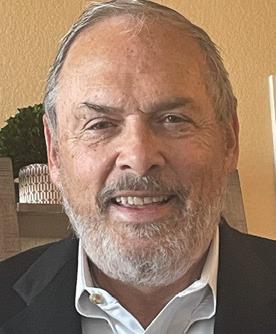

By the way, this tool is only available to agents who are Realtors — that is, members of the local and national Realtor association. Only about half of Colorado’s licensed real estate agents are Realtors.
Here’s how it works. Although not always up-to-date because of homeowners who did not get permits for certain improvements to their homes, the public records do contain extensive information that can be searched using this tool.
We can search not only for style, square footage, bedrooms, bathrooms and lot size, but also for finished or unfinished basements,
Barn
Workshop
Corner lot or cul-de-sac
Fireplace
Estimated value
The estimated value is not the assessor’s valuation which is often inaccurate and, at any rate, not current. The assessor’s valuation is as of June 30th of the previous even numbered year (2024). This tool’s valuation is based on recent comparable sales from both the MLS and off-MLS transactions.
Last, but definitely not least, we can search for homes that were purchased over 5, 10, 15 or 20 years ago. Owners who purchased their home less than five years ago are least likely to be interested in selling, so we don’t bother.
By the way, this same tool can also be used instead of the MLS itself to search MLS listings using those same search criteria above, many of which are not available on MLS
searches. Also, we can add any other search criteria that is important to you, not just the ones listed above, using a key word search. These can include anything — sauna, walk-in bathtub, or you-name-it (literally).
Another important criterion for any buyer is location. You can specify any area, city or subdivision — or multiple areas and subdivisions.
So, let’s say, hypothetically, that you would like us to solicit owners of two-story homes with Littleton addresses but not in Douglas County that were purchased over 10 years ago. The home must have 3-4 bedrooms and 2 or more bathrooms, and it must have a 3-car garage, a finished basement and a workshop. You will consider homes with a valuation up to $900,000. The house should be not more than 30 years old, and it must be owneroccupied.
Working with those criteria, we come up with an Excel spreadsheet which includes the address and name of the owner. Using a separate app, we could add to the spreadsheet the landline and cell number of each owner .
Using a mail-merge program, we could send individually printed letters in individually printed envelopes saying that we have a
We all know someone who has been scammed. My own sister lost $15,000 to a scammer. Since starting this column/ad in 2003, I have warned readers at least ten times about rental scams, and a few months ago I described how a scammer listed a parcel of land he didn’t own with us, and we only found out that was the case when the title company sent a FedEx letter to the owner of record to verify the transaction before it was “sold” to a neighbor.
In my April 6, 2017, column I wrote about a Golden man whom I met because he wanted to buy a million-dollar property once his “inheritance” arrived from his Nigerian scammer. I couldn’t convince him he was being scammed, and he died penniless and homeless, still clinging to his dream.
You and those you know probably have your own stories about scammers.
Recently I came across of an 8-part podcast by Economist Podcasts called “Scam, Inc.” I strongly recommend listening to it.
(It costs a couple dollars per month to subscribe to all Economist podcasts, but this one is worth every penny by itself, and you can cancel after you’ve listened to it.)
“Pig butchering,” I learned, is a Chinese term. Pork is their most precious meat, and the scam entails finding the “pig” (you), building a pig sty (messaging by text or on WhatsApp), feeding it (building rapport, and eventually guiding the person to invest in crypto), rewarding it (showing phony paper returns on the crypto investment), and ultimately butchering it (taking all your funds before you realize the investment was a hoax). Pig butchering take a lot of time.
It sounds a lot like what Bernie Madoff did, doesn’t it? But this is done by Englishspeaking Southeast Asians, mostly in Myanmar, who find a reason never to betray themselves by speaking to you on the phone, where you would recognize they’re not who they pretend to be.
Sometimes, but not always, these are ro-
mance scams, where the scammer gradually convinces you of their love and provides pictures which are stolen off the internet. The first example in the Scam, Inc. podcast, however, was of a Kansas bank president who was conned into investing his bank’s reserves in crypto by a non-romance scammer who simply appealed to the banker’s desire for self-enrichment. He lost $42 million of the bank’s money. The bank was ultimately forced out of business. No one who knew the president could believe what he had done.
Here’s a bit of advice I learned. Take the picture you received from a possible scammer and go to the search field of Google.com. At the right of that field next to the microphone icon is an icon which says “Search by image” when you float your cursor over it. Click on that icon, drag or upload a picture, and it will instantly show you everywhere that picture appears. I uploaded my own picture and, fortunately, it only showed my own websites.
Again, please listen to the “Scam, Inc.” podcast. You’ll learn a lot you need to know.
buyer who is looking for a home like theirs. We could also call the owners or give you the list and let you call them after you’ve signed a buyer agency agreement with us. (This would require that the home is not listed by another agent, which we can confirm.)
This tool can also be used to search expired listings without the use of lead generation services which often provide faulty or out-ofdate data and don’t verify that the home has not been relisted by another agent. Although the inventory of homes for sale is much greater than it has been, this tool allows us to open up the whole universe of homes, whether for sale or not, which match your specific desires. If this sounds like something you’d like us to play with on your behalf, call me or any of our broker associates (listed below) and we’ll get to work for you.
My January 13, 2025, column described ways in which homes could be made fireresistant. If you read that article on our blog, http://realestatetoday.substack.com, you saw multiple links to articles and reports from Colorado to California on how to harden you home against wildfire. Since then, I became aware of a website, www.RotaryWildfireReady.com, created by the Rotary Clubs of Evergreen, Conifer, Boulder and Mountain Foothills, in cooperation with fire departments, community leaders and Fire Adapted Colorado. You’ll be impressed, as I was, by how comprehensive this website is, providing a wide array of advice and resources, not just on hardening your home but on preparing for the eventuality of an evacuation order.
The Colorado Environmental Film Festival runs this weekend, Feb. 21-23 at the Green Center, 924 16th Street, Golden, on the campus of the Colorado School of Mines. I wrote about the festival in last week’s column.
You can study the three-day schedule at https://ceff2025.eventive.org/schedule and buy tickets at https://ceff.net/tickets
If you go, look for our booth in the EcoExpo, where you can browse the display of current solar-powered homes and let us know if you’d like to see any of them.


Don’t miss this remodeled two-bedroom, one-bathroom townhome at 3355 S. Flower #59, in the quiet Jefferson Green subdivision northeast of Highway 285 and Kipling Street. Features include new luxury wood-look vinyl flooring throughout the first floor, new lighting fixtures, new stainless steel sink and range. The fully tiled bathroom has a new vanity and lighting. The bedrooms have new carpeting, ceiling fans, and the primary bedroom has a walk-in closet. There are newer windows throughout. The LG washer and dryer are included. Also included is one space in the 2-car shared garage, with a storage area included. A second designated parking spot is in the parking lot. This home is move-in ready! Listing agent David Dlugasch has created a narrated video walk-through which you’ll find along with lots of magazine-quality pictures at www.GRElistings.com. He’ll be holding it open this Saturday, February 22nd, from 11 a.m. to 2 p.m. Or call him at 303-908-4835 to arrange a private showing.

$785,000
Meticulously maintained with many quality upgrades, this turnkey patio home at 2601 S. Kipling Court is ready for new owners. Located in a private gated community, it is two blocks from Bear Creek Park. The large main level has vaulted ceilings and south facing windows that provide plenty of natural light. The spacious main floor is 1,911 square feet and features an updated kitchen with quartz countertops, gas range and stainless steel appliances. The living room is open to the kitchen and dining areas and has a stacked rock gas fireplace. The large primary bedroom with a 5-piece bath has a sliding door to access the outdoor patio. The main level also includes a second bedroom, a 3/4 guest bathroom and an office space. Quality wood flooring, lighting, handrails and paint add to the cozy ambience. There is a large main-floor laundry with built-in cabinets and utility sink (washer and dryer included). The basement is professionally finished with 9-foot ceilings, family room, bar, pool room (with custom pool table included), a 3rd bedroom and 3rd bath, and a large 350-sq.-ft. storage area. There is a newer furnace and A/C, as well as new garage door and opener. The seller is open to selling any furniture in the home. Find additional photos and view a narrated video walk-through at www.GRElistings.com. To arrange a showing, call listing agent Jim Swanson on his cell phone anytime, 303-929-2929.









On behalf of CommonSpirit St. Anthony and OrthoColorado Hospitals, we invite you to attend our Hospital Community Bene t Forum on April 14 to learn about our 2024 Community Bene t investments and Community Health Needs Assessments. Our leaders will also share how we advance care by participating in the Hospital Transformation Program. Additionally, one of our Health Equity & Advancement Fund awardees will share information about their organization and how their funded initiative is improving Community Health in our region.
Your attendance and participation will help us strengthen our multisector collaboration and our commitment to building healthier communities.
Language assistance services will be provided if you speak a language other than English, including ASL.
Please visit mountain.commonspirit.org/forums or scan the QR code to register for the event.



We’d like to know about events or activities of interest to the community. Visit www.clearcreekcourant.com/calendar/ and post your event online for free. Email ckoeberl@coloradocommunitymedia.com to get items in the newspaper. Items will appear in
UPCOMING
Devil’s Gate presentation: 7 p.m. Feb. 21 Georgetown Community Center 6th and Argentine St. “150 Years of the First Presbyterian Church of Georgetown” presented by Pam McCoy. Free event but donations accepted.
Pond Hockey Tournament: Saturday, Feb. 22, Georgetown Lake Cabin Creek Brewing. Information: jenn@ccmrd.com.
ONGOING
Idaho Springs Lions Club meetings: 7:30 a.m. every rst and third ursday of the month at Marions of the Rockies, 2805 Colorado Blvd., Idaho Springs. Come join us and help to serve our community. For information – www.islions. org, email info@isLions.org or call 720608-1140.
Clear Creek Democrats:5-7 p.m. “ irsty 3rd ursday” at the Vintage Moose, 12 16th Ave. in Idaho Springs. Non-alcoholic options and snacks are provided.
serves individuals and groups in the foothills including Clear Creek County. ey also facilitate school and community groups to build life skills in wellness and resilience among youth. For more information or to schedule a counseling session, visit R1220.org, email Resilience1220@gmail.com or call 720-282-1164.
Dental clinics: Cleanings, X-rays, dentures, tooth extractions and more. Most insurances are accepted including Medicaid. Sliding scale/low-cost options are also available. No appointment necessary. is is a mobile dentist that comes once a month. Call program manager Lauralee at 720-205-4449 for questions.

CASA of the Continental Divide seeks volunteers:CASACD promotes and protects the best interests of abused and neglected children involved in court proceedings through the advocacy e orts of trained CASA volunteers. Be the di erence and advocate for the youth in our community. e o ce can be reached at 970-513-9390.
Clear Creek Rotary 2000 meetings: Clear Creek Rotary 2000 meets at 7:30 a.m. Wednesdays at Marion’s of the Rockies. 2805 Colorado Blvd., Idaho Springs. For more information, email loe er806@comcast.net.
Support after suicide loss: A safe place to share and learn after losing a loved one to suicide. is group meets every fourth Wednesday of the month from 5:30-7:30 p.m. via Zoom or in person at the Resilience1220 o ce. For ages 14 and up. Suggested donation for this group is $15. Register at resilience1220.org/groups.
Storytime with Miss Honeybun: Storytime with Miss Honeybun is at 11:15 a.m. Tuesdays at the Idaho Springs Public Library and at 11:15 a.m. ursdays at the John Tomay Memorial Library in Georgetown.

Clear Creek EMS/Evergreen Fire Rescue Launch Mugs for Rugs Campaign: Bring an old throw rug and you’ll leave with a bright green mug! You can bring them to Station 1A in Dumont, 3400 Stanley Road, or you can email captains@clearcreekems.com and CCEMS will come to you to make the trade. Clear Creek EMS also o ers fallrisk assessments by bringing someone from the re department to make sure smoke and carbon monoxide detectors are working properly. To request a visit, ll out the form at clearcreekcounty. us/1388/Community-Outreach.
Blue Spruce Habitat volunteers needed: Blue Spruce Habitat for Humanity is looking for volunteers. A variety of opportunities and exible schedules are available on new construction sites as well as for exterior minor home repairs. No previous construction experience needed. Contact volunteer@ bluesprucehabitat.org for information.
Resilience1220 counseling: Young people 12 to 20 can get free counseling through an Evergreen-based organization called Resilience1220. Composed of licensed therapists, Resilience1220
Sensitive collection: Resilience1220 strives to inform and support highly sensitive people to live healthy and empowered lives. It meets the third Wednesday of each month from 6-7 p.m. and is o ered via Zoom or in person at the Resilience1220 o ce. Register at resilience1220.org/groups


Public Health o ering sexual health and family planning: Clear Creek County Public Health is now o ering Sexual Health and Planning Services at the Health and Wellness Center in Idaho Springs. Public Health o ers counseling, emergency contraception, pregnancy testing, STI and HIV screenings, basic infertility services and birth control options and referrals. ese services are con dential. Public Health can also now bill Medicaid and most private insurance. However, if you do not have insurance, fees are based on a sliding scale — and no one will be turned away if they are unable to pay.
Clear Creek County Lookout Alert: e CodeRED alerts have been replaced by the Lookout Alert. Residents can sign up for emergency alerts county-wide by signing up at www.lookoutalert.co. e new site replaces CodeRED following the switch to Je Com911 for emergency dispatch earlier this year.

Harris and Christa Lloyd, Idaho Springs Police O cer Brittany Morrow, Colorado State Trooper Ryan Bennie and Georgetown Police Marshal Randy Williams.
Buen’s body cam recorded several ofcers trying to communicate with Glass through the closed driver’s window with the doors locked.
Morrow, Harris and Williams individually attempted to converse with Glass in an attempt to coax him out of the vehicle.
Footage illustrates Williams o ering Glass water, a cigarette, food or even a lighter, as a half smoked marijuana joint was noted on the drivers side seat, if he would open the door.
“We’re not scared of you. We’re just worried about you,” Williams can be seen and heard saying to Glass through the window.
In the video Glass continued to nonverbally communicate with o cers with hand gestures and nodding of his head. When Williams asked Glass if he was hungry or thirsty the video shows Glass nodded “yes.”
At that point, Buen’s body cam recorded him returning to his patrol vehicle and grabbing his own package of beef jerky and a soda to o er to Glass as an incentive to get him out of the vehicle.
Williams continued to talk to Glass through the window, displaying excitement and interest in several of the minerals and rocks Glass said he’d collected during his trip to Moab.
One stone in particular, Williams described as a “pink Amethyst” in the shape of a heart, Glass can be seen continuously holding to the window during the interac-
tion.
“Oh, that’s a good one,” Williams’ can be heard telling Glass.
Glass would also repeatedly form the symbol of a heart with his two hands from inside the locked vehicle.
He would never voluntarily open the door or window throughout the exchange.
Internal discussions between o cers about how best to resolve the situation are recorded on Buen’s body cam.
An o -site supervisor with the Clear Creek Sheri ’s department, Sgt. Kyle Gould, was monitoring the situation in a live-stream from Buen’s body cam from his home in Golden.
Buen stated in subsequent interviews with investigators he was aware Gould was watching in real time when he briefly muted the audio to his body cam and called Gould for direction.
Evidence shows just past midnight on June 11, Gould authorized the use-offorce to break the windows of the vehicle and gain entry to remove Glass.
At 12:42 a.m., a series of events ignited leading to the shooting death of Glass, criminal charges for all law enforcement on scene, national media coverage and outrage, and an eventual $19-million settlement civil award to the Glass family. e exchange lasted three minutes and 30 seconds as recorded by the body cam timecode.
Law enforcement used a batten to shatter the passenger side window of Glass’s vehicle followed by Buen ring ve “sock” rounds at Glass who, according to testimony, was holding a retractable knife in his right hand.
According to evidence, several of the ”non-lethal” shotgun rounds hit Glass. One shattered the driver’s side rear window adjacent to where Williams was positioned.


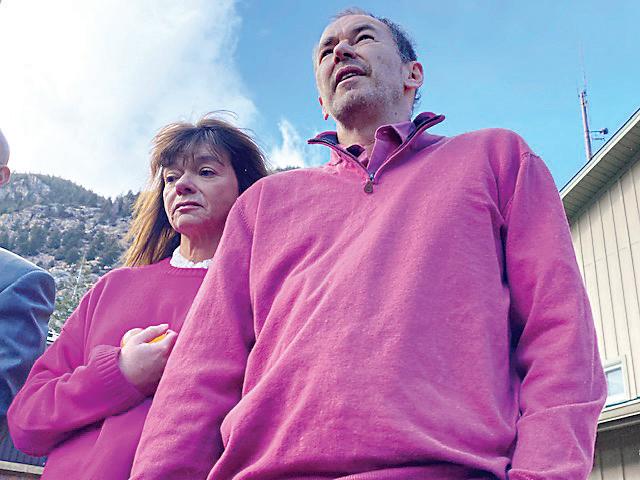
Taser from his duty belt and red two darts, subjecting Glass to ve seconds of electrical shock. Buen told investigators the Taser was “ine ective” at subduing Glass.
At this point Glass can be seen and heard in the body cam footage shouting “I’ll kill you” while waving the knife in the air, still seated in the driver’s seat.
Buen would later tell investigators with the CBI he feared for Williams’ life who was, in his mind, positioned adjacent to the rear window close to where Glass was aying the knife.
Buen’s body cam recorded him standing near the passenger side headlight of the vehicle when he red ve shots from a nine-millimeter handgun through the windshield, striking Glass in the chest, killing him.
Following the shooting law enforcement o cers can be seen rapidly unlocking the vehicle and pulling Glass from the driver’s seat, cutting his clothes o to provide pressure to the visible gunshot wounds, while other o cers started CPR.
Clear Creek Emergency medical teams
and re ghters, who were staged just outside the scene, arrived quickly to render aid to Glass, everything recorded on
None of the 15 members of the jury inched nor did they divert their eyes from the screen at any point while the footage was shown.
Buen, who was seated at the defense table nearest to the screen, was seen watching his own body camera video and taking notes as it played before the jury.
However, just before the fatal shots were red in the video, Buen lowered his head and stared at his notepad. He didn’t lift his head again until the video ended some 30-minutes later.
District prosecutor Stephen Potts asked lead CBI lead investigator in the case Derek Graham in court Feb. 12, “In your view, did Mr. Buen use all available resources at his disposal to end the situation?” Graham responded; “No, he (Buen) did not utilize time as a resource.”
Testimony in the trial was expected to last as many as three weeks according to Colorado 5th Circuit Judge Catherine Cheroutes.



BY JOHN RENFROW JRENFROW@COLORADOCOMMUNITYMEDIA.COM
How long could you watch your family struggle to survive in the wild before pulling the plug? What if there were $250,000 on the line?
at’s the premise of the new show “Extracted,” which premiered on Fox on Feb. 10 with new episodes being released weekly. Conifer resident Sarah omas will watch her husband, Ryan Willis, battle extremely grueling conditions, perilous terrain and the threat of predators in the Canadian wilderness.
From the stressful safety of the family HQ, omas and other contestants’ relatives will watch with bated breath to determine if and when to remove their loved ones from the situation. Family alliances can be formed to allocate which contestant or contestants get helpful supplies, and who is left to their own devices. e last remaining contestant in the wild will win a quarter of a million dollars.



Willis took it in stride, but at the HQ,



“Someone from casting reached out to me, and kind of pitched the idea of the show,” omas said. “And so basically, all we knew was that we needed a family group of three, and one of us had to go into the wilderness, and then the other two would be left somewhere else to kind of facilitate supplies for the person in the wilderness. I pitched it to Ryan after I heard about it, and he was like, ‘Heck yeah, that sounds amazing.’ “ e Conifer family (one of 12 selected to be on the show) didn’t have to draw straws; Willis was thrilled to be the one taking on the elements.
ing) other than just general camping, you know, in Colorado, stu like that. But the point they wanted was that we didn’t actually know how to do anything.” omas said despite the contestants having a varying array of skills, it was still a group of 12 amateur survivalists. Some had never slept a day outside before, while others, like Willis, grew up recreationally roughing it in the Rocky Mountains.
But things got real pretty quickly when Willis was picked up in a helicopter, only allowed to bring the clothes on his back; a T-shirt, light hoodie, hat, socks and boots. He was given a canteen with 12 ounces of water and some camera equipment. at was it … until the rst supply drop hit. at’s where omas, and Willis’ brother, Sean, came in.
“We had no idea what to expect from the HQ experience, and so it was super stressful to sit there that whole rst day and just watch and not be able to do a single thing to help him,” she said. “He would come on camera and be like, ‘Yep, I could really use a re,’ or ‘It’d be really nice to have some tools.’ And we were just kind of stuck without being able to do anything for so long … . Ryan was having the best time of his life, and we were stressed in HQ, wondering when we were going to be able to help him.”
omas said the rst few days were tame, but tensions ared as families had to decide who got what supplies.



Growing up outdoorsy in Colorado, Willis took to the competition with a hungry excitement to test himself and his limits. He explained how he’d always loved survival shows like “Alone” or “Survivorman,” but admitted he didn’t carry any polished survival skills himself.
“Yeah, sweet. I’ll go into the woods,” Willis said on his reaction when omas
“We kind of expected that in the rst day to be able to do a supply drop, but he literally went over 24 hours without any tools, any extra water, nothing for over a day,”
omas said. “He was not fazed. He was just hanging out, building a shelter, you know, piling sticks and stu . He was getting ready for the supply drop, but he had
“ ere was just that stress of, did you pick correct, or are people going to be mad at us because we got Ryan this amazing supply box, and other people didn’t do as good under pressure and didn’t get as many supplies as we were able to send to Ryan,” omas said.
Catch “Extracted” weekly on Fox and streaming on Hulu to watch Willis battle the elements as his family cheers him on and helps straighten his course.
Economic development commission approves $1M grant to boost e orts
BY SARAH MULHOLLAND CPR NEWS
Colorado is upping its stake in developing Estes Park’s Stanley Hotel into a tourist destination for horror lm bu s.
Colorado’s Regional Tourism Act, a state program created in 2009 to attract outof-state visitors following the recession brought on by the housing crisis. To qualify for funding, projects had to show they were likely to substantially increase visitation to the state.
deadline for completion to Dec. 31, 2028.
“Since there’ve been some challenges and delays in getting the nancing done, we want to allow the project adequate time to be completed,” Je Kraft, deputy director of Colorado’s O ce of Economic Development and International Trade, said during the meeting.
To provide the most accurate results by geographical area, Colorado Community Media does not require, but does encourage readers to vote for businesses in their immediate local community. All nominated businesses have an equal opportunity of winning, no purchase required. Please see voting website for complete contest rules and regulations.
e state’s economic development commission approved a $1 million grant from its strategic fund for the Colorado Education and Cultural Facilities Authority, or CEFCA, the Colorado agency taking over the property. e cash will go toward greasing the wheels for the CECFA to issue $400 million in bonds.
e proceeds will be used to transform the iconic hotel, best known as the inspiration for Stephen King’s “ e Shining,” into the Stanley Film Center.
e lm center has since run into numerous delays and struggled to raise cash. Owner John Cullen, whose Grand Heritage Hotel Group bought the property out of bankruptcy in the 1990s, announced a deal to sell the property to an Arizona nonpro t in 2023. But that deal fell through. Now, the CEFCA is stepping in.

e project, billed as a horror-themed museum and event space, has been in the works for a decade. It was approved for state funding in 2015 under
“We’ve come a long way in a really di cult market,” Cullen said during a meeting Tuesday with the state’s economic development commission.
On top of the $1 million grant, to be paid out after the bonds are sold, the commission approved the early release of some taxpayer funds already allocated to the lm center from the Regional Tourism Act. e project was awarded up to $46.3 million from state sales tax to be paid out over 30 years.
e commission also extended the
e CEFCA is a state bonding authority that issues low-cost debt to fund things like schools and museums. It was created by Colorado’s state legislature in 1981. is is the rst time it’s taking ownership of a property.
Despite its challenges, the Stanley Film Center has had some wins. Horror movie studio Blumhouse has signed on to curate the exhibit space. Last year, the Sundance Film Festival announced a partnership with e Stanley to host its Directors Lab. Colorado is currently courting Sundance to become the new home of its signature lm festival. is story is from CPR News, a nonpro t public broadcaster serving Colorado. Used by permission. For more, and to support Colorado Public Radio, visit cpr.org.
Bill clears state Senate committee
BY JENNY BRUNDIN CPR NEWS
A bill to make it harder to remove books from public school libraries cleared its rst Colorado legislative hurdle Feb. 10.
After a three-hour debate, members of the Senate Education Committee approved the bill that would require schools to have a policy on school library book challenges.
e bill stipulates that only parents or legal guardians of children at a school could challenge a book in their child’s library and ask for its removal. It protects school librarians from retaliation and requires that a school’s challenge policy be transparent and posted for the community. It also limits challenges to a book’s place in a library to once every two years.
“It’s never been more important to protect the freedom to read,” said bill sponsor state Sen. Lisa Cutter, a Je erson County Democrat. “Free societies don’t ban books.”
She said the bill would protect school libraries from what’s known as “ban bombing,” where hundreds of requests to ban books bombard school librarians. Book challenges have become more prevalent nationwide. In 2022, Colorado was home to nearly 10 percent of all book challenges, according to the American Library Association.

A publication of


1630 Miner St., Idaho Springs, CO 80452
Mailing Address: 750 W. Hampden Ave., Suite 225 Englewood, CO 80110
303-566-4100
ClearCreekCourant.com
To subscribe call



Director of Editorial & Audience lshapley@coloradocommunitymedia.com
Challenges have drawn lawsuits
Last August, the Elizabeth school board voted to remove 19 books from library shelves after board members conducted a review for content such as racism, graphic violence and sexual content. Many of the books on the list were written by or about people of color or LGBTQ people, such as “ e Bluest Eye” by Toni Morrison and “ e Hate U Give” by Angie omas.
School board members called the books “disgusting” or “ugly” and said it was their duty to protect children. Dozens of other books are on a “sensitive list” –including a number of religious books, books like “To Kill A Mockingbird,” “Catcher in the Rye” and “ e Hunger Games” – that allows parents to prohibit their children from checking out the books.
In December the ACLU led a federal lawsuit on behalf of two students and two groups including NAACP of the Rocky Mountains, arguing that the ban violates federal and state free speech protections. It said the book removals deny authors their right to share their books with students free from viewpoint-based censorship.
Passionate testimonials
Dozens of parents and students gave impassioned testimony in support of the bill Feb. 10. ey said that books have opened their minds to new ideas and perspec-
tives and have given them a window into lives very di erent from their own. ey said books spark imagination and are a way to develop critical thinking skills and empathy.
Hripsime Vartanyan, an exchange student from the nation of Georgia, testi ed for the bill. She explained to legislators that her parents and grandparents grew up in the Soviet Union when books were banned.
“But when I was growing up, there was no Soviet Union. So my parents … they tried for me to have a choice to read whatever book I want. And I’m thankful to them that they give me choice and the opportunity to be educated and read about the topics that I want, not someone else,” Vartanyan said.
She said she was confused when she heard about books being banned in the United States.
Denisse Solis of Reforma Colorado said her school library was one of the most meaningful parts of her childhood.
“Reading about characters navigating challenges helped me process my own experiences and gave me the words to articulate them. e more I learned, the more I could help my family. Libraries didn’t just make me a better student, they made life better for all of us,” Solis said.
Liz Wilson, co-founder of the Pro-Colorado Education Project, said a small but loud group targeted several books at her daughter’s public charter school.
Wilson said the turmoil derailed the productivity of the school’s
board, sta and parents from focusing on academics.
“I urge you to pass this bill because without it, Colorado public schools, students and communities will remain vulnerable to chaos, intimidation, and censorship. If we fail to act, these attacks will escalate,” Wilson said.
Erin Meschke, a Boulder resident opposed to the bill, said no one is trying to ban books. Rather, they are trying to make sure books are aligned with standards protecting children from pornography.
“ e majority of books being challenged … graphically portray sex, pedophilia, rape, incest, and other things that have nothing to do with developmentally appropriate interest, education, or enlightenment,” Meschke said.
Rev. Lori Goebel of Faith Now Fellowship said she believes that other people besides parents should be able to lodge complaints against books. She said books that some parents may nd o ensive shouldn’t be in public school libraries.
“If a parent or guardian chooses to allow their child to access what another parent would deem inappropriate for their child, that is their choice, and there are other places to access those books without placing these books in a school library and crossing the boundaries placed by other parents for their children,” Goebel said.
But Meg Reed, a grandmother, challenged opponents’ assertions that they want to protect parents’ right to guide their children.
“What they really want is to dictate what is right for all families,” Reed said. “While they’re completely free to deny their own children access to whatever books they might nd o ensive, they do not have the right to make those decisions for other parents.”
Mark Fink, executive director of Anythink Libraries, supported the provision that would make it illegal to re, demote or punish a school library worker for selecting, retaining, or displaying a book before it’s been reviewed.
“Without this protection, school library workers are vulnerable to smear campaigns and personal attacks while they do their jobs, which include fostering creative thinking and providing access to a vast marketplace of ideas,” Fink said.
Matt Cook, director of public policy and advocacy for the Colorado Association of School Boards, said most school districts already have policies that meet the requirements of the bill.
What happens next?
A similar bill died last year in the Colorado Senate Education Committee.
is year, with two di erent Democrats on the committee and some changes to appease the Colorado Association of School Boards, the bill passed on a 5-to2 vote. It now goes to the Senate oor for a vote.
is story is from CPR News, a nonpro t public broadcaster serving Colorado. Used by permission. For more, and to support Colorado Public Radio, visit cpr.org.
ckoeberl@coloradocommunitymedia.com
Advertising & Sales rdaniels@coloradocommunitymedia.com
Production Manager tfildey@coloradocommunitymedia.com
BUSINESS INQUIRIES For advertiser or vendor questions, please email our business department at accounting@ coloradocommunitymedia.com
Columnists & Guest Commentaries Columnist opinions are not necessarily those of the Courant. We welcome letters to the editor. Please include your full name, address and the best number to reach you by telephone.
Email letters to kfiore@coloradocommunitymedia.com
Deadline Tues. for the following week’s paper.
Clear Creek Courant (USPS 52610)
A legal newspaper of general circulation in Idaho Springs, Colorado, the Clear Creek Courant is published weekly on Thursday by Colorado Community Media, 1630 Miner St., Idaho Springs, CO 80452. PERIODICAL POSTAGE PAID AT Idaho Springs and additional mailing o ces.
POSTMASTER: Send address change to: Clear Creek Courant, 750 W. Hampden Ave., Suite 225, Englewood, CO 80110

In the article on the INSPIRE program in the Feb. 13 edition, the group’s organizers would like to clarify that while care for participants may cost as much as $20,000, no family pays that much to attend. The charitable foundation Active 4 All provides financial support.



Ten years ago, my wife, Beth, decided that we needed to plant a vegetable garden. Not just a garden; a raised garden. I was nonplussed by the idea; it looked like a ton of work, and I had survived 40-plus years without a garden and seemed to be doing OK.
But I went along with the plan. First, the raised boxes had to be built; then the sprinkler system for the boxes needed to be installed; then the huge (emphasis on huge) pile of super special garden growing dirt needed to be moved from the street to the boxes; and after all of that, we had to purchase the plants, and nally we needed to plant things in speci c places. e tomatoes needed a wall to climb, the zucchini needed room to vine, and each plant needed to be perfectly placed. e entire process took several weeks of hard work, enduring weather that was either too cold or too hot, which led to more than a few frustrated exclamations. e work was challenging, and throughout it all, I struggled to see a compelling reason for putting in such e ort. While the idea of having fresh vegetables was appealing, I felt that store-bought options were su cient.
en we got to August. It was time to harvest the rst crop of cherry tomatoes. As we were out picking those tomatoes, I popped one in my mouth. Everything changed in that moment. at tomato and the hundred or so that followed burst with avor, a tangy richness I had never experienced in any other vegetable. e avor lingered on my taste buds; an explosion I can still taste as I sit here writing. For the next two months we had cherry tomatoes with just about every meal, and I honestly never tired of them. e same rich taste was true of the zucchini, the summer squash, the jalapenos, the basil, and the rest of the crop.
In re ection, I saw how right Beth had been
State Sen. Larry Liston, a Republican from El Paso County, has carried a lonely torch during the last two legislative sessions. His bills that proposed to classify nuclear energy as “clean” in Colorado went exactly nowhere.
is year’s nuclear bill has a di erent look. It has four prime sponsors, two of them Democrats. And it comes after warnings about rapidly escalating electrical demand for data centers.
House Bill 25-1040 will get its rst committee hearing on ursday afternoon. It would allow nuclear energy to count toward Colorado’s clean energy goals of net-zero emissions by 2050.
Unlike Liston’s previous bills, it might even get approved. All ve Republicans in the House Energy and Environment Committee will likely support it. e committee chair, Alex Valdez, a Democrat and former solar developer, helped write the bill.

reactor. If successful, these smaller modular reactors would lower the nancial risks. e downside? Presumably, the tax base for Pueblo would potentially be far less.
WORDS OF ENCOURAGEMENT



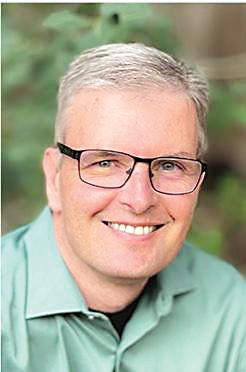
and how amazing her vision for what was possible. I could nally see how the work had paid o , how it made a di erence — a delicious di erence. e “work” you are doing, whether to overcome a struggle or to lay plans for your future, is much harder than the work of creating that garden. It will not always be easy, but you must stay committed to your plan; the payo for the e ort will be an unmatched avor of perfection. It’s a sweetness that will stick with you for years and years to come, and a avor you will never forget.
As you move forward. keep in mind the amazing taste that awaits you; the taste of perfection, the taste of success. Each day you can be another step closer.
You have got this.
I hope my words inspire you, and that you will share them with those who need encouragement. ank you to everyone who has shared their stories with me so far; I truly appreciate hearing about the valuable ideas you nd in these columns and how you use them to uplift those around you. You can reach me at jim.roome@gmail.com.
Jim Roome lives in Arvada with his wife Beth. He spent 34 years in public education. Lessons learned from the one two punch of being diagnosed with MS shortly before his best friend was diagnosed with terminal cancer led him into a new pursuit as a freelance writer and speaker. He uses his life experiences and love of stories to inspire, educate and encourage local, national and international audiences.
In public testimony, the other seven Democrats will likely be reminded that we have no longterm solution for safeguarding radioactive waste. ey will likely hear that nuclear plants remain extremely expensive. Georgia’s Vogtle nuclear plant was originally projected to cost $14 billion. It was completed in 2023 at a cost of $36 billion. Other nuclear projects have had similar cost overruns.
Some Coloradans also remember St. Vrain, the problem-plagued nuclear power plant south of Greeley. It operated from 1976 to 1989. Customers of Public Service Co. of Colorado, now a subsidiary of Xcel Energy, paid $1 a month from 1993 until 2016 to cover the $125 million cost of decommissioning the nuclear plant.
Legislators likely are hearing from Xcel’s lobbyists. It has two nuclear plants in Minnesota. e utility announced in October that it has models showing nuclear delivering 1,000 megawatts of electrical generating capacity within Colorado by 2035-37. at compares with the 750 megawatts of Comanche 3, the coal- red power plant in Pueblo that Xcel plans to retire before 2031.
A Pueblo task force created by Xcel and some local leaders in early 2024 reported that a nuclear power plant was the best replacement for the jobs and property taxes lost in the transition from coal. Craig, in northwest Colorado, has similarly been hunting for answers to replace jobs and tax base after the last coal plant closes in 2028.
Cheerleaders for nuclear usually ignore the costs. All of the technologies that will get us beyond 85% to 90% renewables have the same problem. eir gambles are smaller, though. In Wyoming, Bill Gates has invested in a rst-of-kind small modular liquid-metal fast


Liston, a retired investment banker, told me he hopes for nuclear costs mirroring the declined cost of computing. at has a certain irony. e explosive growth of data centers being predicted provides a key argument for taking nuclear seriously. Xcel has told state regulators it projects need 1,923 megawatts of new generation — equivalent ot several coal- red plants — for large customers by 2031, with 70% of that coming from data centers. How real will this demand be? And who bears the risks of investment in new and still expensive technologies?
I caught up with Dylan Roberts at a water conference. If adopted, the bill will “allow nuclear to be part of the conversation about Colorado’s energy future,” he said. “It doesn’t obligate the state nancially in any way. It doesn’t move anything forward as far as permitting or regulations. It would just say that if we get to a point where it becomes nancially viable and a private entity – along with local governments — buy in and they decide they want to pursue this, it would count toward Colorado’s carbon emission reduction goals.” Obviously, he added, conversations must also occur about security and waste.
A crucial di erence in this year’s bill — to be o ered as an amendment in the committee hearing on ursday — is a requirement that nuclear pay property taxes similar to coal and other energy producers. Roberts pointed out that France gets 70% of its electricity from nuclear energy. “As far as I know, nobody is scared of going to France,” he said. “ ey have found a way to do it and do it safely and responsibly. I’m not saying it has to be part of Northwest Colorado’s energy portfolio or the state’s portfolio, but at least it can be part of the conversation if a bill like this passes.” I’m not sure that “love is in the air,” as one columnist concluded. Less-expensive opportunities may arrive in enhanced geothermal, for example. What we do have is sober discussion about the hard work of getting to zero emissions by 2050 while satisfying increased energy demands. at will be harder than closing coal plants by 2030.
Allen Best publishes Big Pivots, which chronicles the energy and water transitions in Colorado. For more on this topic, visit BigPivots. com.
Agood satire has the power to hold a mirror up to society and show the many ways things could be changed for the better. at’s the aim of Bruce Norris’“Clybourne Park,” which the Arvada Center is staging for its rst show of 2025.
Directed by Kenny Moten, “Clybourne Park” runs at the Center, 6901 Wadsworth Blvd., through Sunday, March 30. Performances are at 7:30 p.m. Wednesday through Saturday, 1 p.m. on Wednesday and 2 p.m. on Saturday and Sunday.

According to the provided information, “Clybourne Park” uses one modest bungalow in a Chicago suburb to explore how society changes over time. e show goes from 1959 to 2009 and during that time the neighborhood transitions from a predominantly white neighborhood to a predominantly Black neighborhood. e audience has the opportunity to explore topics like race, gentri cation and more throughout the decades.
We interviewed Kendall Malkin, who plays Betsy in the production, about the show, her character and more.
Interview edited for brevity and clarity.
Who is Betsy?
She is a Deaf character who also happens to be eight months pregnant and married to Karl. I am Deaf, and I found it appealing that this production was searching for authenticity with having a Deaf actor play a Deaf character. is is something that is not common, but there’s a growing change in the theater world to include more actors with disabilities. However, I also had to consider the time period and how Betsy is portrayed in regards to how she communicates.
What’s your favorite part about being in the show?
My favorite part has to be how inclusive the Arvada Center and this production has been, which you will see is very ironic because in this play Betsy is often excluded. e cast and crew has been very welcoming and thoughtful, often asking great questions to get to know me, but also how to accommodate my needs. ey have provided ASL interpreters during rehearsals which has been profoundly helpful to assist me to succeed in my role and working with the cast.
What do you hope audiences take away from the show?
Many people who would meet Betsy would think that is how all Deaf people communicate. Betsy has what is often called “Deaf speech,” and signs at the same time. However, I want to be clear that is actually not how I speak. ere is a spectrum of communication in the Deaf community. Some deaf people can speak well, others may not be verbal for various reasons and communicate with sign language. In regards to the show, I think it sparks much-needed conversations and awareness of how we interact, understand and include people in our everyday lives.
Colorado Community Media welcomes letters to the editor. Please note the following rules:
• Email your letter to letters@coloradocommunitymedia.com. Do not send via postal mail. Put the words “letter to the editor” in the email subject line.
• Submit your letter by 5 p.m. on Wednesday in order to have it considered for publication in
Jeffrey Allen “Jeff” Stead passed away on January 28, 2025, at his parents’ home in Lakewood, Colorado.

Information and tickets are available at https:// arvadacenter.org/events/ clybourne-park.
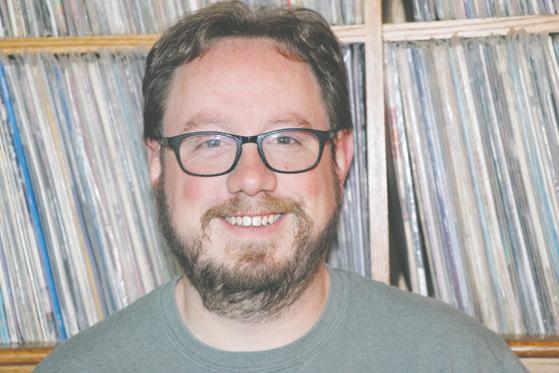


Recognize Black Excellence at the Owl Club of Denver
A great way to celebrate Black History Month is to check out History Colorado’s Owl Club of Denver: Legacies of Excellence exhibit, which runs at the History Colorado Center, 1200 Broadway in Denver.
On display through May 10, the exhibit explores a prominent all-Black debutante cotillion club in Denver and uses oral histories and a collection of photographs to tell the story. e Owl Club was founded in 1941 by eight railroad Pullman, waiters and businessmen to recognize the academic excellence of young African American women from Denver, according to provided information.
To learn more about the club and its importance for the community, check out the exhibit. All the details are available at www.historycolorado.org/exhibit/owlclub-denver.
Celebrate Freedom Through Film at Englewood
e I Love Independence Mini Film Festival, will be held from 2 to 4 p.m. on Saturday, Feb. 22 at Englewood Arts, 10901 E. Winner Road.
e free event will showcase winning lms from entries that focused on telling stories that raise awareness of the historical signi cance of independence. e aim of the contest and festival is to encourage lmmakers to showcase their creativity and passion for history, foster community and civic engagement in the city’s historical heritage, and connect the community and visitors to the city’s history and cultural sites, according to provided information.
For all the details about the festival, visit www.iloveindependence.org.
Clarke’s Concert of the Week — MJ Lenderman at the Bluebird Theater
“Manning Fireworks,” the solo album released by MJ Lenderman (the guitarist of Wednesday), was one of the biggest indie rock successes of 2024. e album is a galvanizing mix of classic rock and alt-country, and doesn’t sound that far o from a modern version of iconic folk-rock groups like e Band.
In support of the album, Lenderman is coming to the Bluebird eater, 3317 E. Colfax Ave. in Denver, at 9 p.m. on Friday, Feb. 28. He’ll be joined by Wild Pink, an alt-rock band I’ve written about numerous times in this column.
It’ll be an evening featuring some of the best indie rock around, so get tickets at www.axs.com.
Clarke Reader’s column on culture appears on a weekly basis. He can be reached at Clarke.Reader@hotmail.com.
the following week’s newspaper.
• Letters must be no longer than 400 words.
• Letters should be exclusively submitted to Colorado Community Media and should not submitted to other outlets or previously posted on websites or social media. Submitted letters become the property of CCM and should not be republished elsewhere.
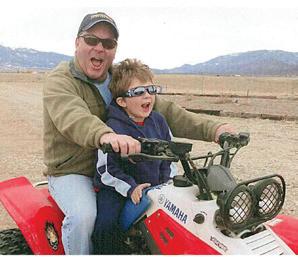
Jeff is survived by his son, Oliver Stead; his brother, Marc Stead; his parents, Karen and Paul Bryant; his ex-wife, Bess Dahmash; and his longtime companion, Carrie Tilley.
Jeff grew up in the mountains outside Denver, attending schools in Conifer and Evergreen. He spent his adult years living and working along the I-70 corridor, from Loveland to Idaho Springs. He formed many cherished friendships while working at Loveland Ski Area and Tommyknocker Brewery in Idaho Springs. Jeff and Carrie also owned and operated the “Oink” food truck in Idaho Springs for several years, serving up great food and creating lasting memories with friends and customers.
An avid outdoorsman, Jeff loved fishing, hiking, hunting, and snowboarding. He was also a devoted




Denver Broncos fan. While he treasured his family and friends, he absolutely cherished his son, Oliver, above all else.
A Celebration of Life will be held on Saturday, March 1, 2025, from 11:00 a.m. to 2:00 p.m. at Rocky Mountain Villages, 2644 Alvarado Rd, Empire, Co 80438. This is located in the Easter Seals Camp just north of Georgetown. Directions can be found online by searching “Rocky Mountain Villages.” A light lunch will be provided, and all are welcome to attend.
Jeff was known for his kindness, generosity, and deep compassion for both people and animals. He was a supporter of the local animal shelter, Charlie’s Place. In lieu of flowers, contributions may be made in his memory to friendsofcharliesplace.org.



His warmth and spirit will be deeply missed by all who knew him.















BY CHRIS KOEBERL CKOEBERL@COLORADOCOMMUNITYMEDIA.COM
Friday mornings during ski season, a lot of kids in Clear Creek County will wake up before the sunrise to check equipment, snowboards, skis, helmet, goggles and gloves in preparation of hitting the slopes.
After they’re dressed and with a quick breakfast, they wait in Idaho Springs or Georgetown for the school bus to take them to Loveland Ski Area for a day of lessons or just fun with friends.
e program Snow Dodgers has been teaching local kids from kindergarten and up the con dence and skills to ride the mountains on skis or snowboards since 1963, according to board members.
“If they’re good enough, they can just be free-range skiers and do their thing all day,” rst-year Snow Dodgers volunteer Chelsea Dendegna said. “It sets them up with lessons if they need it and just supports them on their journey as skiers or snowboarders.”
Many of the students who started early in the program are now in the sixth grade and riding doubleblack diamond trails at Loveland.
“I’ve learned a lot by watching other people and my family teaching me things, so I’ve improved a lot,” Carlson Elementary sixth-grader Maddie Hinojos said.
A team of volunteers and board members keep Snow Dodgers going each year, piling equipment
into pickup trucks and checking names as kids get on the bus to perpetuate what generations before them had done.
“Everybody works hard to make things come together for a project like this. It’s just a nice community,” Hinojos said.
According to state records, Snow Dodgers is one of the longest-standing ski clubs in Colorado, and many locals can attest to parents and grandparents who learned to ski with its volunteers throughout the years.
Some of the organization’s mottoes on the website clarify goals and motivation: “Take Risks and Reap the Rewards,” “Be Prepared To Experience New Adventures” and “Overcome Your Fears and Master Your Skills.”
e organization’s long-standing relationship with Loveland Ski Area in Dillion is seen as mutually bene cial, according to Loryn Roberson, director of marketing for Loveland Ski Area.
“For Loveland, our community is everything and it’s so important to support these new skiers and riders and give them a space to not only learn but also to enjoy the slopes,” Roberson said.
Snow Dodgers typically runs from the second weekend in January to the second weekend in March.
“Having a program like this in place really allows







them to familiarize themselves with the sport and it really grows the next generation of skiers and riders which is incredibly important to Loveland,” Roberson said.
Opportunities for mountain youth to learn and excel in the sport of skiing and riding don’t end with Snow Dodgers.
High school and middle school programs in Clear Creek County o er hands-on experiences in the manufacture, maintenance and business of the ski industry.
“Creek Craft” is a new name in the ski and snowboarding industry, and Clear Creek County high school students, mentors and teachers aim to make it pro table.
Students in the Clear Creek High School Entrepreneur II class are taking their business education to the next level by creating a sustaining model for manufacturing and marketing, according to Career Connections coordinator Dacia Kelly.
“ e students in this class are learning how to start a business and they’re doing it through a real-world project rather than a hypothetical,” Kelly said.











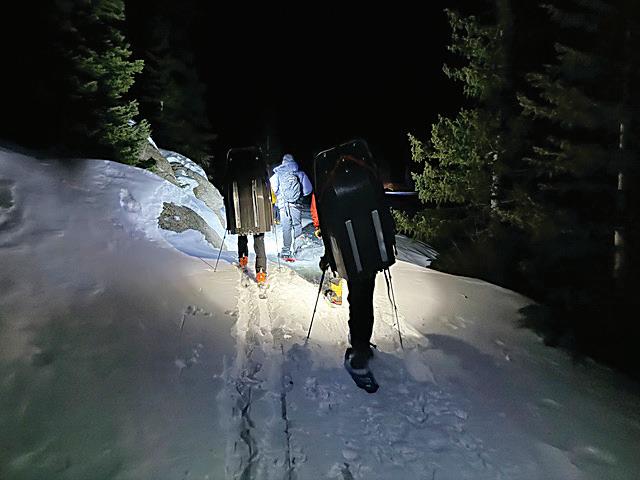
Meanwhile, outdoor rec and tech instructor Ben Shay at the high school and middle school in Evergreen gives students the hands-on experience of building a board or skis starting with plywood, laminate and an idea.
“It gives kids an outlet to do creative work with their hands and bring something to fruition. I like to tell the story, ‘Kids used to go home and give their mom a wooden spoon they made in wood shop.’ Now they get to show up with their own pair of skis or snowboard,” Shay said.
Several rec and tech students were eager to show o their one-of-a-kind creations they made just for themselves when the Courant visited the class in November. e art of creating a board or ski is dependent on the individual creating it; thick or thin tails and tips, shaping and tapering you create your custom ride with graphics you’ve designed, 11th-grade student Johannathan Scott said.
“It’s really a surreal kind of feeling when you get to make something that you’re going to use.., it’s just a really good feeling,” Scott added.


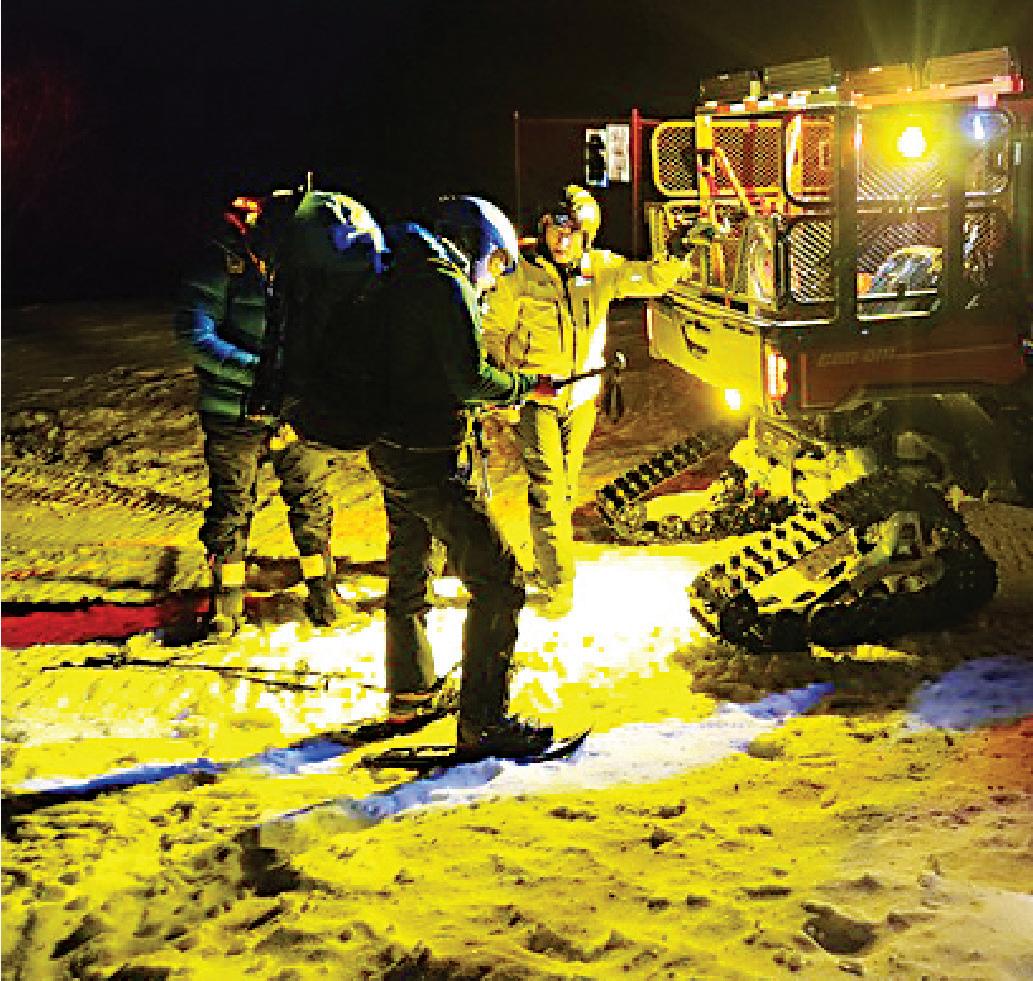


Another advantage to the rec and tech program is local students are learning the skills in high-demand at local ski areas and shops, according to both Shay and Roberson.
“It’s such a unique program. ese other communities and these other schools have things like woodshop and home economics; but for our community, the thing we all live and breathe is skiing. So, to be able to modify it and have this program that allows them to learn that skill set is invaluable,” Roberson said.
“ ey learn a lot of the woodworking skills here that they would in a wood shop, but then they get something that they actually get to strap on their feet, go to Snow Dodgers, ride the hill and say, ‘Look, I made this,’” Shay said.
The pinnacle of skiing skills: Alpine Rescue
Based in Evergreen, Alpine Rescue is an all-volunteer, mountain search-and-rescue team that’s been operating, free of charge, for more than 60 years.
Alpine Rescue is one of 13 Colorado teams accredited by the Mountain Rescue Association in technical rock rescue, wilderness search, avalanche rescue and winter technical rescue, according to its website.
“In the last few months we’ve had some pretty intense rescues and our pick of the rst to go in are usually pretty tough skiers and they have had to go miles in








sometimes very deep snow that is not easy to ski in. So, there’s a lot of physical endurance and strength,” Alpine Rescue volunteer and public information o cer Dawn Wilson said.
“To have kids learn how to ski and not just ski but be ‘mountain aware’ is idyllic. I’m jealous of those kids,” Wilson said.
Programs like Snow Dodgers instills early education and muscle memory in kids that are critical to working and playing in the mountains, according to Wilson.
“If those kids grow up and they want to give back to their community and volunteer for re or a mountain rescue team they’ve got that ingrained in their body and soul, they don’t even have to think about it,” Wilson said.
Somepetsdiedafterdrinking rawmilk,midnightprowls
BY SARAH BODEN KFFHEALTHNEWS
More than 80 domestic cats, among many other types of mammals, have been con rmed to have had bird u since 2022 — generally barn cats that lived on dairy farms, as well as feral cats and pets that spend time outdoors and likely caught it by hunting diseased rodents or wild birds.
Now, a small but growing number of house cats have gotten sick from H5N1, the bird u strain driving the current U.S. outbreak, after eating raw food or drinking unpasteurized milk. Some of those cats died.
e strain of bird u currently circulating has not adapted to e ciently spread among people. And there have been no known cases of cat-to-human transmission during the current outbreak of H5N1.
Still, there’s always been the risk that cats, which are arguably only semi-domesticated, could bring home a disease from a midnight prowl.
“Companion animals, and especially cats, are 100% a public health risk in terms of the risk of zoonotic transmission to people,” said virologist Angela Rasmussen, who studies disease progression in emerging viruses at the University of Saskatchewan’s Vaccine and Infectious Disease Organization.
is is because we snuggle with and sleep in bed with our cats. When we’re not looking, cats drink from our water glasses and walk on kitchen counters. So, cat owners should be aware of the ongoing spread of bird u. “By reducing the risk to your cats, you reduce the risk to yourself,” Rasmussen said.
Rasmussen doesn’t think pet owners should be afraid their cats will give them bird u but said taking precautions is good for pets, and for public health.
Signs of bird u in cats include runny nose and discharge around the eyes, explained Michael Q. Bailey, presidentelect of the American Veterinary Medical Association.
H5N1 also causes neurological problems like dizziness and seizures, which are symptoms of rabies, too. Rabies is almost always fatal, and it poses a threat to human health, so any animal suspected of having the viral disease must be euthanized. Bailey encourages people to ensure pets are up-to-date on their vaccinations.
Veterinarian Jane Sykes, who specializes in infectious diseases in cats and dogs at the University of California-Davis School of Veterinary Medicine, said people should not assume it’s bird u if their cat is sick — even if their animal spends time outdoors or eats a raw diet. Upperrespiratory illnesses are common in cats, while H5N1 is “still pretty rare.”
Sykes gives her indoor cat, Freckles, regular kibble exclusively. She told NPR and KFF Health News she has no concerns about Freckles getting H5N1 because the heating process of making dry or canned pet food kills viruses.
More cases in cats, more risk to humans
Some people feed their pets raw meat or unpasteurized milk because they think it’s a more nutritious or natural diet.
e American Veterinary Medical Association’s website discourages this due to foodborne pathogens like salmonella and listeria, and now the highly pathogenic H5N1.
play an essential role in protecting humans from zoonotic diseases. e American Veterinary Medical Association says the risk of H5N1 spilling over from a pet to a person is “considered extremely low, but not zero.”
State and local public health agencies, including those in Los Angeles County and Washington state, have issued similar warnings against raw food diets for pets.
Concerns for human health are partly why the FDA announced last month it is now requiring cat and dog food companies to update their safety plans to protect against bird u. is came after the Oregon Department of Agriculture discovered a cat that was “strictly an indoor cat” had contracted H5N1 and died after consuming a frozen turkey product made by the raw pet food brand Northwest Naturals. It stated that “tests con rmed a genetic match between the virus in the raw and frozen pet food and the infected cat.”
Northwest Naturals voluntarily recalled that batch of its frozen turkey-based product. e company told KFF Health News and NPR that the recall involved “a small product run” and that it has concerns about the accuracy of the Oregon Agriculture Department’s testing.

By keeping pets healthy, veterinarians

Los Angeles County’s public health department said ve cats from two households tested positive for bird u after drinking unpasteurized raw milk from the Raw Farm dairy in California’s Central Valley.
Raw Farm voluntarily recalled its milk and cream after retail products tested positive for H5N1, but it denies any food safety issues, calling the concern “a political issue.”
Veterinarians also warn pet owners not to allow cats unsupervised time outside as there’s the risk of them getting H5N1 by interacting with other animals that might carry the disease.
“ is is a very scary virus, given that it can infect so many di erent host species,” said Bruce Kornreich, director of Cornell University’s Feline Health Center.
At least one instance of a cat infecting a person with bird u occurred in 2016. As NPR reported, a veterinarian in New York City caught the virus after having close contact with infected cats. e vet experienced mild symptoms and quickly recovered.
In that case, the strain of bird u was H7N2, not the H5N1 that is now circulating in the U.S.
H7N2 is a very di erent type of virus, Sykes explained. But she said it shows that cat-to-human transmission of avian in uenza is theoretically possible. ere isn’t a lot of research on transmission of bird u from companion animals like cats or dogs to humans, though Rasmussen agreed it’s de nitely a concern: e more infections you have in animals, “the more your luck is potentially going to run out.”
Most people who have caught H5N1 are agricultural workers who had direct contact with infected poultry or cattle. Of at least 67 con rmed human cases of H5N1 in the U.S., there’s been one fatality in an immunocompromised person who had contact with birds.
In general, zoonotic disease researchers want more H5N1 surveillance in companion animals of all types. Even if the human death toll of H5N1 remains relatively low, it remains a public health risk.
Chances for mutation
Part of the concern with this H5N1 outbreak is that bird u viruses change. Just a few mutations could make this strain ad-

ept at spreading between people. And the more people who catch H5N1, the more likely it would adapt to be more e cient, said Suresh Kuchipudi, a virologist at the University of Pittsburgh School of Public Health, where he researches zoonotic diseases. Kuchipudi has studied H5N1 in cats.
Another concern is something called reassortment. If an animal or person is infected with two viruses at once, the viruses can trade genetic material, creating something new. is is common in in uenza, so virologists are on the lookout for a case in which the bird u reassorts to make a virus that’s far more contagious, and potentially more virulent.
Virologist Rasmussen is way more worried about this happening in pigs. Human respiratory physiology is more like that of swines than felines. So far, the current outbreak of H5N1 has not reached commercial hog operations. Rasmussen hopes it stays that way.
Kuchipudi said that reassortments are relatively rare events, but the outcome is completely unpredictable. Sometimes the results are benign, though it was likely a reassortment that involved an avian virus that led to the 1918 u pandemic, which killed an estimated 50 million people. In the century since, virologists have established a global surveillance network to monitor in uenza viruses. Scientists say continued investment in this network is key to preparing for and hopefully preventing another pandemic.
Winter is “reassortment season” because of all the in uenza viruses circulating, Rasmussen said. A reassortment in cats could technically be possible since these pets occasionally get seasonal u, but it’s highly unlikely. Rather, Rasmussen said, it’s more likely that a cat would pass H5N1 to a human who already has seasonal u, and then a reassortment happens in the sick person. While the risk isn’t zero, Rasmussen doubts this will happen. It would depend on how ill the human was, and how much virus they’re exposed to from their cat.
“Unless the cat is really shedding a ton of virus, and you’re kind of making out with the cat, I think it would be hard,” she said.
Rasmussen and Kuchipudi caution

there isn’t enough research to know for sure how much virus cats shed, or even how they shed the virus.
e Centers for Disease Control and Prevention was poised to release a new study about H5N1 in cats, but that was delayed when the Trump administration paused the Morbidity and Mortality Weekly Report. at investigation, revealed through emails obtained by KFF Health News in a public records request, found that house cats likely got bird u from dairy workers. Scientists and public health agencies should question previously held assumptions about bird u, Kuchipudi urged. He noted that 20 years ago nobody would have predicted that bird u would infect dairy cattle the way it is now.
Dogs seem to fare better
e FDA says other domesticated animals, including dogs, can get bird u infections. ere are no con rmed cases of H5N1 among dogs in the U.S., though in other countries they have died from the virus.
ere’s some disagreement and an overall lack of research on whether cat biology makes them more susceptible to H5N1 than other mammals, including humans, pigs, or dogs.
But cat behaviors, such as their love of dairy and predation of wild birds, put them at higher risk, Kuchipudi said. Also, living in groups might play a role as there are more feral cat colonies in the U.S. than packs of stray dogs.
ere’s very little people can do about the H5N1 circulating in wild birds. As Rasmussen explained, “It’s ying around in the skies. It’s migrating north and south with the seasons.”
But she said there’s a lot people can do to keep the virus out of their homes.
at includes limiting a pet’s exposure to H5N1 by not feeding them raw food or unpasteurized milk, and trying to keep them from interacting with animals like rodents and wild birds that could be infected with the virus.
KFF Health News is a national newsroom that produces in-depth journalism about health issues and is one of the core operating programs at KFF — an independent source of health policy research, polling, and journalism.
BY JENNIFER BROWN AND OLIVIA PRENTZEL THE COLORADO SUN
Questions are swirling about how the Trump administration’s new immigration policies will continue to a ect Colorado, especially after federal agents went door to door in Denver and Aurora on Feb. 5 detaining an unknown number of people.
Could an immigration enforcement operation like the 2006 raid of a Greeley meat-packing plant that resulted in 262 arrests happen again? Would hiding in a church to avoid deportation, like Jeanette Vizguerra did during the last Trump administration, work now?
Here are answers to some major immigration questions.
Can local law enforcement arrest someone for their immigration status?
No. Under Colorado law passed in 2019, local law enforcement o cers are not allowed to make an arrest or detain a person based solely on their immigration status or an ICE request.
ey also are barred under state law from notifying ICE about the immigration status of someone in their custody. However, if law o cers arrest someone who has an ICE detainer, they can notify ICE when that person is being released from custody. ey cannot, however, detain people after their release in order to facilitate pickup by ICE.
“If the city receives a release noti cation request from ICE for someone in custody, we will comply,” Denver Mayor Mike Johnston said recently. “However, our law enforcement o cers are not immigration o cers, and we will never ask them to do the work of the federal government via immigration enforcement. e bottom line is Denver will always enforce criminal law and maintain public safety, regardless of an individual’s immigration status.”
Pueblo County Sheri David Lucero said recently that his o ce will not participate in any ICE roundups, but would help support the federal o cers in cases involving criminal charges and for backup if an o cer is in danger.
“If there is something criminal related and we know the o ender is in our county, absolutely we will support them,” Lucero said in a statement. “We will not support any roundup operations. My role isn’t to enforce immigration laws. I am not the federal sheri . My role is to enforce Colorado law and to ensure the safety of the citizens of Pueblo County.”
State law “prohibits depriving a person of their liberty on the basis of a suspected civil immigration violation in the absence of a warrant signed by a judge,” the ACLU said.


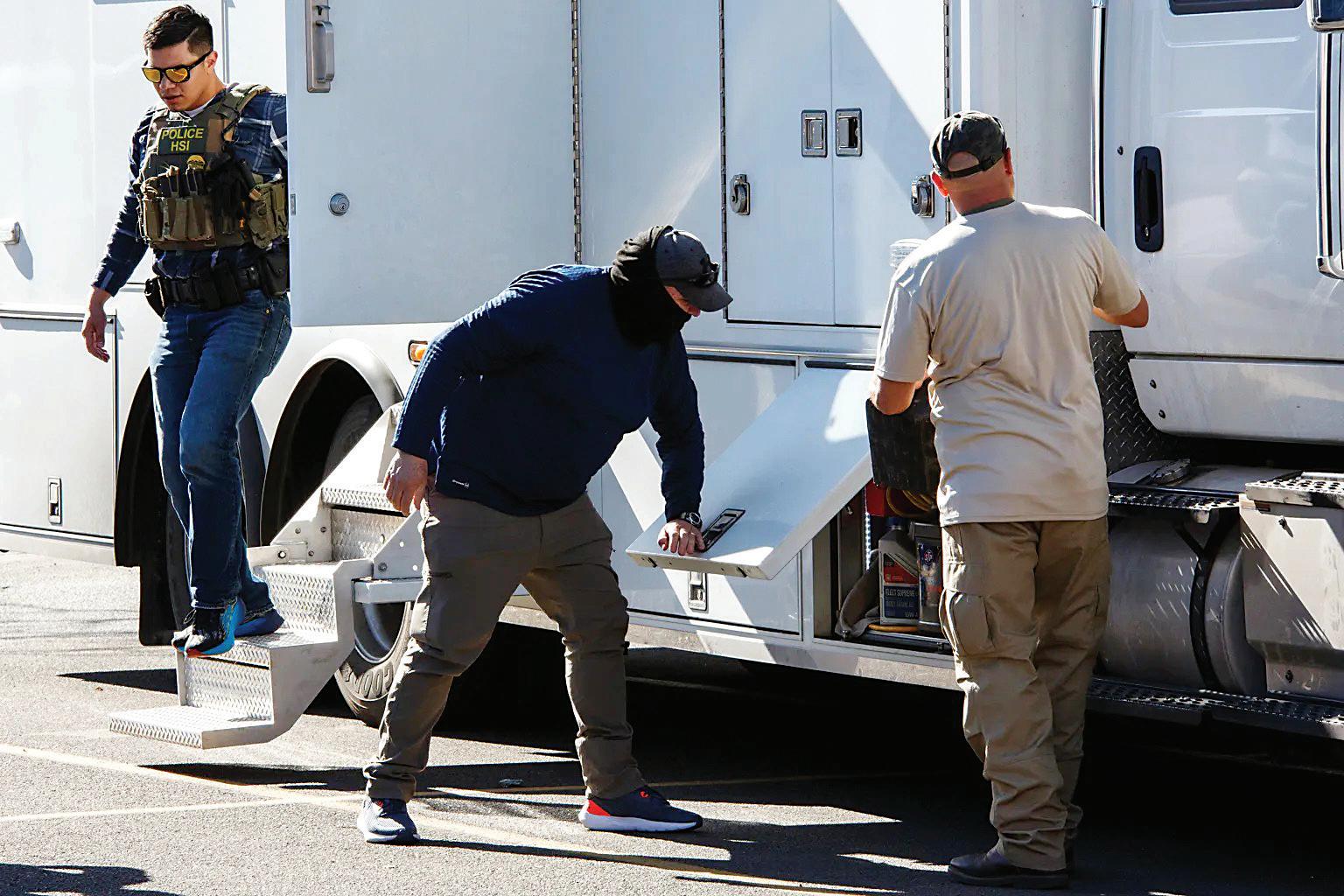
Probation o cers are prohibited from sharing information with ICE.
Last year, the Colorado Court of Appeals ruled that the Teller County sheri ’s practice of holding undocumented immigrants in its county jail through an agreement with federal authorities violated state law.
When is it illegal to report someone to ICE?
It is illegal, under a Colorado law passed in 2021, to threaten to report another person’s immigration status to law enforcement to pressure them to perform an act or refrain from performing a lawful act.
Colorado also has a speci c law to protect tenants from this type of threat.
e ACLU of Colorado recently led a lawsuit against an Aurora landlord alleging that the landlord made repeated threats to report tenants to immigration authorities, a violation of Colorado’s Immigrant Tenant Protection Act. e Venezuelan tenants said the landlord wanted to evict them, changed the locks without telling them and repeatedly threatened to call ICE if the family did not vacate, the ACLU said. e tenants have pending asylum cases to try to stay in the United States.
Can a federal agent demand a list of residents, employees, students, etc., who do not have Social Security numbers?
Under Colorado law, state agencies cannot share personal identifying information with ICE unless ICE provides a
warrant or a subpoena.
State agencies can only collect immigration status when they are required by state or federal law.
Are there “protected areas” in Colorado where federal agents cannot make immigration-related arrests?
e rules on this have recently changed.
e Trump administration last month reversed a 2011 policy that prevented agents from making arrests in sensitive locations, including schools and churches. e policy was made under former President Obama and reinstated under President Biden.
But under the new administration, the U.S. Department of Homeland Security announced the end of that policy and said it is allowing agents more authority to carry out immigration enforcement. is set o panic in some Colorado schools and might have resulted in an increase in absences.
“Criminals will no longer be able to hide in America’s schools and churches to avoid arrest. e Trump Administration will not tie the hands of our brave law enforcement, and instead trusts them to use common sense,” Benjamine Hu man, the acting Homeland Security secretary said Jan. 21.
In addition to schools, the previous federal policy listed several other protected areas, including medical facilities, churches, day care centers, social service centers, funerals and graveside ceremo-

nies and places where there is an ongoing parade, demonstration or rally.
Local elected o cials are opposed but somewhat powerless to stop it.
“We also believe that everyone deserves to be able to get an education, get health care, and worship without fear,” the Denver mayor’s o ce said. “Schools, hospitals and churches are the bedrock of the community and essential to providing the services that build healthy societies. We strongly oppose immigration enforcement or raids in these sensitive locations and will do everything in our legal authority to protect them.”
ICE cannot make arrests in or around courthouses or when someone is on their way to or from court, under federal policy.
In 2017, the First Unitarian Society church in Denver allowed a mother of four who was facing deportation back to Mexico to hide in its building. Jeanette Vizguerra, a housekeeper who was accused of using a made-up Social Security number on a job application, lived in the sanctuary for more than three years before deportation proceedings were halted by the Biden administration.
For what reasons can ICE agents legally arrest someone?
ICE is authorized to arrest individuals suspected of immigration violations. Federal immigration agents can arrest people without legal status, even if they have no




































































1. TELEVISION: How many castaways are on “Gilligan’s Island”?
2. GEOGRAPHY: Which Asian nation’s nickname is “Land of the under Dragon”?
3. LITERATURE: What is author J.K. Rowling’s real rst name?
4. SCIENCE: What is a type of material that can’t carry an electrical charge?
5. U.S. STATES: Which state’s nickname is “ e Last Frontier”?
6. MEASUREMENTS: How many quarts are in a half gallon?
7. MOVIES: Which famous landmark is featured in the movie “Rebel Without a Cause”?
8. ANATOMY: What does the cerebellum control in the human brain?
9. U.S. PRESIDENTS: Where is the late Jimmy Carter’s presidential library located?



10. HISTORY: When did the Great Fire of London occur?
Answers 1. Seven.
2. Bhutan.
3. Joanne.
4. An insulator.
5. Alaska.
6. Two.
7. Gri th Observatory.
8. Movement and balance.
9. Atlanta, Georgia.
10. 1666.
(c) 2025 King Features Synd., Inc.


• $143,000-$170,000
• RESPONSIBLE FOR OVERSEEING THE OPERATIONS OF THE TOWN OF GEORGETOWN, INCLUDING ALL DEPARTMENTS AND STAFF, AND REPORTING TO THE BOARD OF SELECTMEN.
• $21.00-$29.00 PER HOUR RESPONSIBLE FOR WATER AND WASTEWATER PLANT MAINTENANCE AND DAILY OPERATIONS. PARKS & RECREATION
•
•

& Beauty
Dental insurance from Physicians Mutual Insurance Company. Coverage for 400+ procedures. Real dental insurance - not just a discount plan. Get your free Information Kit with details! 1-855-526-1060 www.dental50plus.com/ads #6258
STRUGGLING TO HEAR?
Audien Hearing delivers crystalclear sound with affordable, invisible hearing aids. Starting at $189! Call Now: 888-760-1015
Medical
Attention oxygen therapy users! Discover oxygen therapy that moves with you with Inogen Portable Oxygen Concentrators. Free information kit. 1-866-4779045
Miscellaneous
Water damage cleanup & restoration: A small amount of water can lead to major damage in your home. Our trusted professionals do complete repairs to protect your family and your home’s value!
Call 24/7: 1-888-872-2809. Have zip code of service location ready when you call!
Don’t let the stairs limit your mobility! Discover the ideal solution for anyone who struggles on the stairs, is concerned about a fall or wants to regain access to their entire home. Call AmeriGlide today! 1-833-399-3595
DIRECTV Stream - Carries the most local MLB Games! Choice Package $89.99/mo for 12 mos Stream on 20 devices at once. HBO Max included for 3 mos (w/ Choice Package or higher.) No contract or hidden fees! Some restrictions apply. Call IVS 1-866859-0405
Miscellaneous
We buy houses for cash as is! No repairs. No fuss. Any condition. Easy three step process: Call, get cash offer & get paid. Get your fair cash offer today by calling Liz Buys Houses: 1-844-8775833
Jacuzzi Bath Remodel can install a new, custom bath or shower in as little as one day. For a limited time, waving ALL installation costs! (Additional terms apply. Subject to change and vary by dealer. Offer ends 3/30/25.) Call 1-844-501-3208
Bath & shower updates in as little as 1 day! Affordable prices - No payments for 18 months!
Lifetime warranty & professional installs. Senior & military discounts available. 1-877-5439189

Wesley Financial Group, LLC Timeshare Cancellation Experts
Over $50,000,000 in timeshare debt & fees cancelled in 2019. Get free info package & learn how to get rid of your timeshare! Free consultations. Over 450 positive reviews. Call 833-308-1971
AGING ROOF? NEW HOMEOWNER? STORM DAMAGE? You need a local expert provider that proudly stands behind their work. Fast, free estimate. Financing available. Call 1-888-878-9091
Have zip code of property ready when calling!
Consumer Cellular - same reliable, nationwide coverage as the largest carriers. No longterm contract, no hidden fees free activation. All plans feature unlimited talk & text, starting at just $20/mo. Call 1-877-751-0866
!!OLD GUITARS WANTED!! GIBSON, FENDER, MARTIN, Etc. 1930’s to 1980’s. TOP DOLLAR PAID. CALL TOLL FREE 1-866-433-8277
Replace your roof w/the best looking & longest lasting material steel from Erie Metal Roofs! 3 styles & multiple colors available. Guaranteed to last a lifetime! Limited Time Offer up to 50% off install + Additional 10% off install (military, health & 1st responders.) 1-833-370-1234
MobileHelp America’s premier mobile medical alert system. Whether you’re home or away. For safety & peace of mind. No long term contracts! Free brochure! Call 1-888-489-3936
Home break-ins take less than 60 seconds. Don’t wait! Protect your family, your home, your assets now for as little as 70¢/ day! 1-844-591-7951
Prepare for power outages today with a Generac Home Standby Generator. Act now to receive a FREE 5-Year warranty with qualifying purchase* Call 1-855948-6176 today to schedule a free quote. It’s not just a generator. It’s a power move.
Eliminate gutter cleaning forever! LeafFilter, the most advanced debris -blocking gutter protection. Schedule free LeafFilter estimate today. 20% off Entire Purchase. 10% Senior & Military Discounts. Call 1-833610-1936
Become a published author We want to read your book! Dorrance Publishing trusted since 1920. Consultation, production, promotion & distribution. Call for free author`s guide 1-877-7294998 or visit dorranceinfo.com/ ads

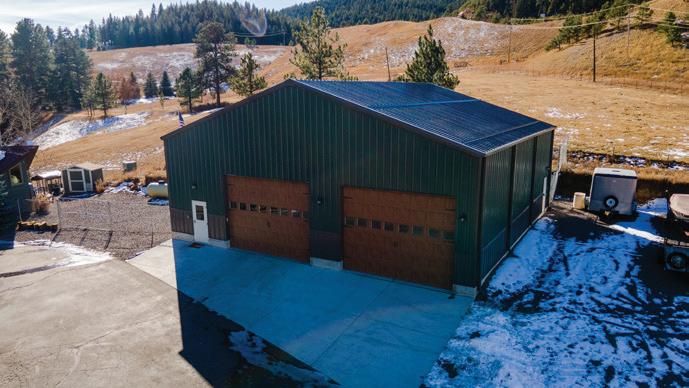

























CCC1016 First Publication: February 20, 2025 Last Publication: February 27, 2025 Publisher: Clear Creek Courant Public Notice
OF IDAHO SPRINGS Clear Creek County, Colorado Ordinance No. 5, Series 2025 AN ORDINANCE ZONING THE 1.99 ACRE PARCEL OF CITY-OWNED LAND WITHIN THE J.J. ELLIOT PLACER LOCATED IN SECTION 2, TOWNSHIP 4 SOUTH, RANGE 73 WEST OF THE SIXTH PRINCIPAL MERIDIAN, IN CLEAR CREEK COUNTY, COLORADO, KNOWN BY ADDRESS AS 839 COLORADO HIGHWAY 103, AS RESIDENTIAL THREE (R-3)
WHEREAS, the City of Idaho Springs, Colorado (“City”) is a statutory city, duly organized and existing under the laws of the state of Colorado; and
WHEREAS, pursuant to the Colorado Municipal Annexation Act, C.R.S. § 31-12-101, et seq., and by Ordinance No. 4, Series 2025, the Idaho Springs City Council (“Council”) may act to annex that City-owned land recently ac-
quired from Alfred E. Brown known by address as 839 Colo. Hwy 103 and more particularly described in Exhibit A to this Ordinance (the “Property”),
WHEREAS, pursuant to C.R.S. § 31-12-115, the City may consider and process the zoning of property concurrently with the annexation of property; and
WHEREAS, the Council finds that the Property is adjacent to areas identified by the City’s Comprehensive Plan as “transitional mixed use” and “residential mixed density”; and
WHEREAS, the Council further finds that the Property is surrounded by a variety of uses, including single-family residential, commercial uses, and public uses including an EMS facility and Carlson Elementary school, showing a clear mix of uses in the area; and
WHEREAS, as such, the Council finds that zoning the Property to the City’s Residential Three (R-3) zone district would be compatible with both the existing conditions of the Property as well as the City’s vision for the area, as expressed through the City’s Comprehensive Plan; and
WHEREAS, additionally, in acquiring the Property from the previous owner, the City agreed to use the Property for multi-unit senior affordable housing, a use that would be permitted under the R-3 zone district and a use that is in-demand and lacking in the City and within the region; and
WHEREAS, the Council therefore finds that zoning the Property to R-3 is generally in conformity with the City’s Comprehensive Plan, will preserve and promote property values in the area, will be in harmony and compatible with the surrounding land uses and present development in the area, and will generally promote the public welfare.
NOW, THEREFORE, BE IT ORDAINED by the City Council of the City of Idaho Springs, Colorado, as follows:
Section 1 The above and foregoing recitals are incorporated herein by reference and adopted as findings and determinations of the Council.
Section 2. The zoning classification for the Property known as 839 Colo. Hwy 103, as more particularly and fully described in Exhibit A, attached hereto and incorporated herein by reference, is hereby approved and established as Residential Three (R-3).
Section 3. The official zoning map of the City is hereby amended to incorporate therein the zoning classification established in Section 2, above. Except as expressly so amended, the said zoning map is readopted, ratified and confirmed in all respects.
Section 4. Any and all Ordinances or parts thereof in conflict or inconsistent herewith are, to the extent of such conflict or inconsistency, hereby repealed; provided, however, that the repeal of any such Ordinance or part thereof shall not revive any other section or part of any Ordinance heretofore repealed or superseded.
Section 5. Should any one or more sections or provisions of this Ordinance be judicially determined invalid or unenforceable, such judgment shall not affect, impair or invalidate the remaining provisions of this Ordinance, the intention being that the various provisions are severable.
INTRODUCED, READ AND ORDERED
PUBLISHED at a Regular Meeting of the City Council of the City of Idaho Springs, Colorado, held on the 10TH day of February, 2025.
Chuck Harmon, Mayor
ATTESTED AND CERTIFIED:
Diane Breece, City Clerk
PASSED, ADOPTED AND APPROVED, after publication and following public hearing, at a Regular Meeting of the City Council of the City of Idaho Springs, Colorado, held on the 10th day of March, 2025.
Chuck Harmon, Mayor
ATTESTED AND CERTIFIED:
Diane Breece, City Clerk
EXHIBIT A LEGAL DESCRIPTION of ZONED PROPERTY
A part of the J.J. Elliot Placer, M.S. No. 2331, located in Section 2, Township 4 South, Range 73 West of the 6th Principal Meridian, City of Idaho Springs, County of Clear Creek, State of Colorado, more particularly described as follows;
Beginning at corner No. 1 of said J.J. Elliot Placer; thence S51’31’27”W, a distance of 292.74 feet; thence S87’36’20”W, a distance of 118.66 feet; thence N24.19’07”W, a distance of 184.93 feet to the Southerly right-of-way of Colorado State Highway 103; thence along said right-of-way the following six (6) courses 1. N53.05’00”E, a distance of 4.81 feet; 2. N57’56’00”E, a distance of 56.31 feet to a non-tangent curve; 3. along said curve to the right a distance of 179.39 feet. having a radius of 676.20 feet and a central angle of 15·11•59”, and a chord which bears N67’28’00”E;
criminal record or pending charges. Immigrant advocacy groups are advising people not to answer their doors at home if ICE knocks. Federal immigration agents are not allowed to enter without a warrant signed by a judge. ICE has not responded to questions about whether it had a warrant for the raids conducted in Denver and Aurora last week. The agency was accompanied by several other federal law officers, including from the Drug Enforcement Administration, which said it had a warrant.
Can state laws ever supersede federal law on immigration?
No, but states have the power to make laws surrounding immigration as long as they do not conflict with federal law. It’s solely up to the federal government to regulate who can enter the country, yet states have the authority under the Tenth Amendment to limit their involvement in federal immigration enforcement, which is how Colorado is allowed to prohibit local authorities from arresting people because of an immigration detainer.
States also can decide things such as whether immigrants need to show proof of legal status to get driver’s licenses. In Colo-

rado, that proof is not required.
Federal law restricts undocumented immigrants from receiving federal public benefits, including Medicaid and food assistance. But states have the power to manage some public benefits as long as they are funded by the state. In 2021, the Colorado legislature made state and local benefits, including retirement, food assistance, health care and housing, available to undocumented residents.
What rights does someone have after they are detained by ICE? Can they be deported without a hearing?
Only an immigration judge can order someone’s deportation — but there are exceptions.
Immigrants without legal status have a right to defend themselves in a court hearing, as long as they have not been deported previously. There is also an exception called “expedited removal,” which allows the Department of Homeland Security to deport someone without a hearing.
The rules surrounding expedited removal can change with the administration, and the Trump administration has already “dramatically expanded” the reasons for expedited removal, according to a lawsuit filed by the ACLU.
The Trump administration issued a rule Jan. 21 that said expedited removal now applies to people found anywhere in the country who cannot prove they have been

in the United States for more than two years. Prior to this, federal agents only used expedited removal against people within 100 miles of the border and within 14 days of their arrival in the country, according to the National Immigration Law Center.
Undocumented immigrants have the right to consult an attorney, but the government does not provide one for free the way it does in serious criminal cases. Colorado has more than 77,000 pending immigration cases at the federal courthouse in Denver and inside the ICE detention center in Aurora.
Are raids allowed on businesses or factories suspected of employing people who are undocumented?
ICE agents are allowed to enter public spaces such as restaurants or stores. However, they cannot enter private areas of a workplace unless they have a warrant or permission from the employer, according to the ACLU.
In 2006, more than 100 federal agents raided the Swift & Co meatpacking plant in Greeley, arresting 262 workers. It was the largest immigration raid in U.S. history, news outlets reported at the time, saying Latino neighborhoods in the Weld County city were abandoned as people fled in fear or hid in basements.
ICE raided five other Swift plants in Texas, Utah, Nebraska, Iowa and Minnesota, detaining 1,297 undocumented workers.
The raids were the result of an investigation into fraudulent Social Security numbers.
What does it mean that Trump is ending temporary protected status?
Some of the relatives of people taken during last week’s raids in Denver and Aurora said their loved ones had temporary protected status, a federal designation that grants temporary legal status to people from specific countries that are facing humanitarian crises. People from Haiti, Afghanistan and Venezuela have been allowed to enter the country in recent years through TPS.
It allows them to live and work in the United States while their home countries are facing political or environmental crises, but does not give them permanent legal status.
About 600,000 Venezuelans across the country have temporary protected status that had been extended by former President Biden until October 2026. Trump’s new homeland security secretary, Kristi Noem, revoked that extension, meaning the designation for those 600,000 Venezuelans will expire in April.
Migrants whose temporary protected status has expired could face deportation. This story was printed through a news sharing agreement with The Colorado Sun, a journalist-owned nonprofit based in Denver that covers the state.











LEAP ayuda a los residentes elegibles de Colorado a pagar una parte de sus gastos de calefacciòn de invierno.





